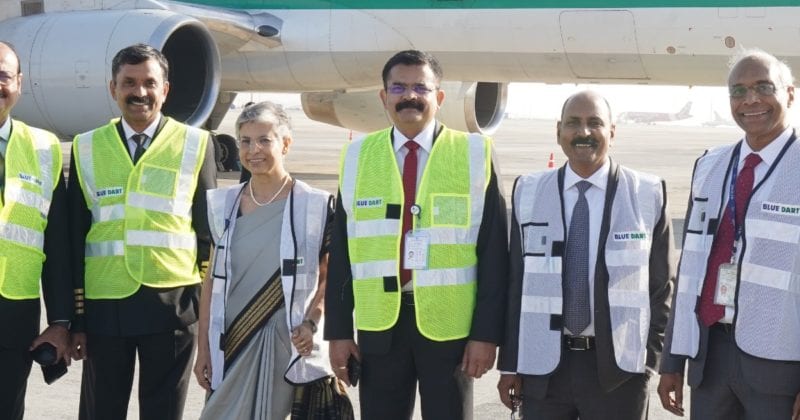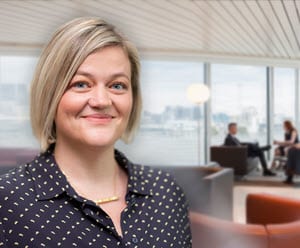
Women in Aviation: how Blue Dart Aviation’s MD lasted 50 years in the industry

Higher education for women has fueled India’s economic growth in recent decades. Still, the paradox is there has been a decline of women entering the labor force in recent years, with less than 30 percent of working-age women currently employed compared to nearly 80 percent of men in India, according to research by the World Bank.
India’s government has been making efforts with awareness programs and affirmative action policies, such as a Maternity Benefit Act in 2017, to reduce the drop-out rate of women from its workforce after motherhood, as well as increased access to subsidized childcare.
However, changing social norms about gender equality and women’s role in the workforce, as opposed to just being homemakers, has become just as crucial to India’s economic future. A study on advancing women’s equality in the Asia Pacific showed increasing women’s labor force participation by 10 percentage points could add $770 billion to India’s GDP by 2025.
Tulsi Mirchandaney managing director for Blue Dart Aviation (which is part of DHL eCommerce Solutions ) has spent almost five-decades long in the male-dominated aviation industry. Born in the matriarchal society of Meghalaya, a hilly state in north-eastern India, Mirchandaney shares her journey against gender discrimination, as well as how fellow women can break the glass ceiling.
Q: What is the percentage of women in the civil aviation industry in India, and what are some of the challenges you’ve seen and overcome. What has improved in promoting equality, and what remains left to be done?
Tulsi: At about 12.4 percent, India has amongst the highest percentage of women pilots in the world, and it is not uncommon to have flown on a passenger airline with an all-women crew. Changing traditional perception is perhaps one of the biggest challenges women face, and the endeavor to constantly having to prove one’s capability.
The biggest equalizer is success. In an increasingly transparent and free society, where achievement is visible to a broad audience, it is touted, applauded and in great demand, regardless of gender.
The success of women achievers in traditional male bastions - in academics, sport, profession, and even the defense forces - has undoubtedly inspired a multitude of followers.
Organizations can do more in creating a culture of meritocracy, where everyone is motivated to succeed. However, the final choice is with the individual, to put her mind and heart and feet out and take the first step – we are limited only by our willingness to make our dreams come true.
You’ve made sharp u-turns from dropping out from school to getting an MBA later in life. What was your educational journey, and how has that helped you professionally and personally? Do you have any advice for women at different stages of life with regards to education?
There have been several course corrections. I enrolled for an engineering graduate degree after completing school. I guess it was a natural progression since my brothers, both engineers, were my academic benchmark.
Girls were then a tiny minority in the program on a campus far away from home. I left three years later before graduating, and my unplanned first job in an airline was intended to fund further studies. Aviation, however, led to an enduring, professional distraction, and an MBA degree in International Aviation followed along the way.
I lay great store by education, more by its application than the physical stamp of qualification. Certification helps get a foot in the door, but the more valuable outcomes are disciplined thought and linkages that provide an intuitive perspective.
Education is so much more accessible, interesting and fun today. The opportunities to learn are boundless. I try and fit in a summer course into my annual holidays because I find it rejuvenating. It’s an important part of one’s professional arsenal and makeup, and I would highly recommend it to every woman who wishes to challenge herself and explore her full potential. You could be pleasantly surprised.
You’ve been in aviation for a very long time. What changes have you seen in the industry, and how have you navigated them?
I celebrated my 50th year this June in the airline industry! It’s been a host of deeply fulfilling experiences in various functions. It has often been challenging but I’ve learned a lot and enjoyed great camaraderie with industry colleagues.
When I started, most processes were manual, the calculator and computer were non-existent (the abacus was a useful implement), and our means of communication was via SITA (a company that provides telecommunication services to the air transport industry), and the dependable teletype machine.
Exports were a far cry from the present. It was mainly basic resources, semi or unfinished goods and some manufactures (mica, opium, semi-finished leather, carpets, gramophone records, anatomical specimen, orchids, silk, cotton fabric and the like)!
Airline routes had multiple stops, and cargo was a by-product that journeyed happily across sectors. Despite the circuitous routes, air cargo transportation was surprisingly efficient, and transit times have changed little since then.
Air cargo remains a strong, underplayed revenue contributor. Nothing has brought the importance of air cargo to the fore more acutely than the present Covid-19 pandemic, when all airlines are grounded. Still, freighters are ceaselessly plowing the skies carrying all those essential supplies.
Blue Dart Aviation celebrated its 24th anniversary on 17th June this year, and is now the longest-serving private carrier in the country. We created aviation history in 1996, setting up India’s first domestic cargo airline, and it was a great privilege to have been part of the team.
Over the years, as the only cargo airline, we’ve worked relentlessly to change policies in an environment dominated by passenger airlines with far larger fleets.
We have fought hard for policies such as retention and development of our airside presence, self-ground handling, and security certification, all of which contribute to lower cost, greater efficiency, and a high standard of service quality. This includes the incorporation and acknowledgment of air cargo and air express’ importance in the National Civil Aviation Policy 2016.
Most importantly, we have a great, professional team that’s continuously exploring innovative ideas, developing and executing them inhouse to help us navigate through some very turbulent skies, with a high level of compliance and safety.
I’m so proud of our team who rallied unhesitatingly, sometimes at great personal hardship, to serve the nation during the current pandemic and countrywide lockdown, and gave us all a sense of great purpose and national pride.
In your time with Blue Dart, how has the company ensured that women got a fair shout at the workforce, as well as received equal opportunities for growth and learning? How did that environment help you?
10 years ago, we had no women pilots. Today, we have five. Though the numbers are still small, we have women in almost every department in Blue Dart Aviation that were known to be male-dominated – engineering, quality, technical services, flight despatch, flight operations, and materials.
We have policies and systems in place that ensure transparency and protection against unfair and discriminatory practices, as well as an open culture of communication and engagement. This is borne out by our track record of employee loyalty.
As part of the ‘Women in Aviation’ effort, we work closely with the Airports Authority of India each year, to familiarize young schoolgirls with various aspects of the aviation industry. We try to attract more women to our industry by encouraging them to visit our facilities and witness our operations.
The programs have always ended with delighted and enthusiastic faces that would hopefully contribute to the future of our wondrous world of air transportation and flying machines, bridging the globe when all else fails.
MORE FROM THIS COLLECTION









 English
English